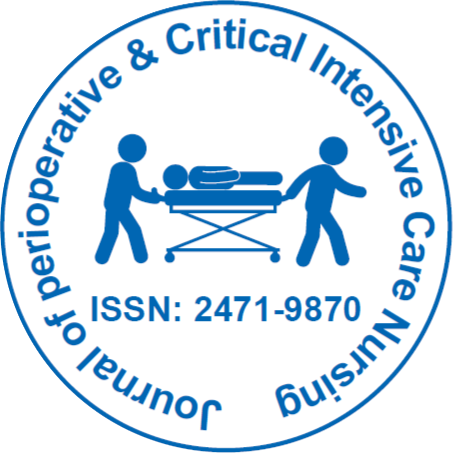
Journal of Perioperative & Critical Intensive Care Nursing
Open Access
ISSN: 2471-9870

ISSN: 2471-9870
Opinion Article - (2022)Volume 8, Issue 3
Patients with critical illness are typically at risk for neurological dysfunction due to underlying neurological issues or subsequent insults. It can be challenging to identify the specific parts of brain function that are impacted and to determine the best ways to alleviate neurological disorder. This is made more challenging by the little data from clinical examination in such individuals and the impact of medications, notably sedation, on brain function. The evaluation and management of individuals with brain injuries increasingly heavily rely on tools for measuring and monitoring brain function that have greatly improved in recent years. It's important to note that no one strategy is suitable for all patients, and various variables will need to be monitored in different individuals; frequently, a combination of monitoring tactics will be required. The overall objectives of neuromonitoring include: 1) identifying deteriorating neurological function and secondary cerebral insults that may benefit from particular treatment; 2) improving pathophysiological understanding of cerebral disease in critical illness; 3) providing clear physiological data to guide and individualize therapy; and 4) assisting in prognostication. We will discuss the neuromonitoring methods utilized in critically sick patients today and how they ought to be applied to help us provide better treatment for them in this piece. Instead of describing cutting-edge methods that are still in the research phase, we will focus on tactics that are now being used in clinics.
The idea of multi-modality monitoring, which involves simultaneously digitally recording many different aspects of brain function, has been put out since a single monitoring approach would not be able to adequately capture the complex pathologic changes in the brain. The ability to capture a wide range of physiological data across various patients has been demonstrated by multicenter collaborations like Brain IT (Brain Monitoring with Information Technology Collaborative Network), which has the potential to produce unique clinical insights. Huge volumes of data may be analyzed using sophisticated mathematical and statistical techniques to reveal patterns in brain injuries and make it simpler for medical professionals to identify particular targets. In the end, this strategy should provide real-time, userfriendly advanced data analysis that, when utilized at the corporate level, should enable real-time, user-friendly advanced data analysis. However, issues with data integration and synchronization still exist.
However, no published evidence from randomized trials to indicate that targeting any factors improves clinical outcome has been revealed in the previous 25 years, despite clinical research showing the physiological feasibility of this method. The focus of neurocritical care research over the past 20 years has shifted from trials intended to address straightforward issues regarding the day-to-day management of patients with acute brain injuries, such as ideal hemoglobin transfusion thresholds, hyperventilation, and arterial pressure management after hemorrhagic stroke, to studies focused on the potential that early pharmacological intervention could improve outcome.
Building big clinical trial networks with the necessary infrastructure should be simpler as neuromonitoring technology becomes more widely available and used. A comprehensive clinical examination must come first when evaluating brain function in severely sick individuals. It is necessary to integrate and combine monitoring systems in order to produce a full and accurate picture of the patient's condition so that the appropriate course of treatment may be determined. Monitoring systems frequently focus on specific variables.
It's important to note that neuromonitoring is a continuous process rather than a single measurement; the ability to observe changes over time is essential for evaluating therapeutic response and prognosis prediction. No monitor will be improving patient outcome, but careful data interpretation and incorporation into a personalized treatment plan should assist optimize care for seriously ill patients with brain damage.
Citation: Jain R (2022) Importance of Neuromonitoring for Patients with Critical Illnesses. J Perioper Crit Intensive Care Nurs. 8:206
Received: 21-Nov-2022, Manuscript No. JPCIC-22-21468; Editor assigned: 23-Nov-2022, Pre QC No. JPCIC-22-21468 (PQ); Reviewed: 07-Dec-2022, QC No. JPCIC-22-21468; Revised: 15-Dec-2022, Manuscript No. JPCIC-22-21468 (R); Published: 22-Dec-2022 , DOI: 10.35248/2471-9870.22.8.206
Copyright: © 2022 Jain R. This is an open-access article distributed under the terms of the Creative Commons Attribution License, which permits unrestricted use, distribution, and reproduction in any medium, provided the original author and source are credited.